Analysis of armored vehicles used by the Russian army airborne troops for the invasion of Ukraine. Manny videos were released by the Russian Ministry of Defense showing airborne armored vehicles deployed during a special military operation in the Kyiv region, Ukraine.
Follow Army Recognition on Google News at this link
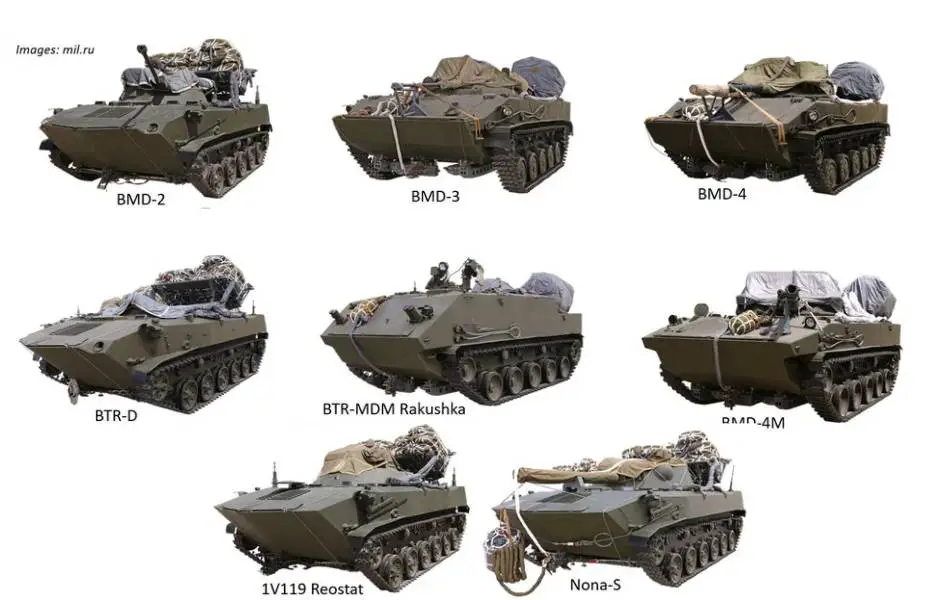
Russian armored vehicles used during combat operations in Ukraine. (Picture source mil.ru)
According to the military balance 2021, the airborne forces of the Russian armed forces includes 45,000 soldiers with one Special Forces brigade, one airborne division including one tank battalion, three para/air assault regiment, one artillery regiment, one air-defense regiment; one airborne division including one tank battalion, two para/air assault regiment, one para/air assault battalion, one artillery regiment, one air defense regiment; two airborne division including two para/air assault regiment, one artillery regiment, one air defense regiment, one independent airborne brigade, and three air assault brigades.
Main combat vehicles of Russian airborne troops include T-72B3 Main Battle Tank, BTR-82AM 8x8 Armored Personnel Carrier (APCs), BTR-D tracked APC, BTR-MDM tracked APC, Tigr-M, UMAZ Toros, Typhoon-VDV, BMD-1, BMD-2, BMD-3, BMD-4, BMD-4M tracked IFVs (Infantry Fighting Vehicles), BTR-RD anti-tank tracked vehicle, 2S25 Sprut-SD 125mm fire support tracked vehicle, 2S9 Nona-S 120mm tracked self-propelled mortar armored vehicle, 2S9 NONA-SM, and BTR-ZD 23mm self-propelled anti-aircraft armored vehicle.
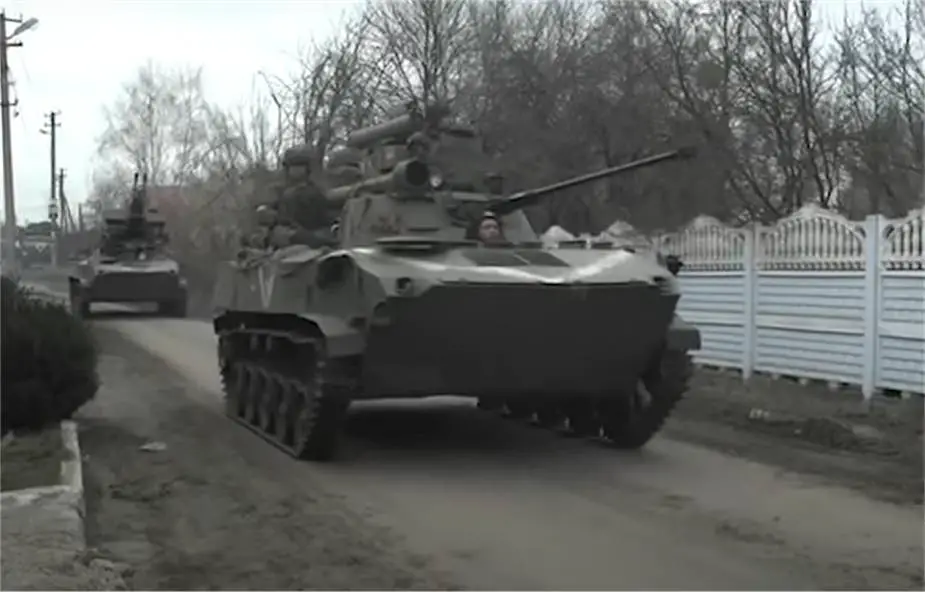
BMD-2 Airborne Infantry Fighting Vehicle
BMD-2
The BMD-2 is an armored airborne infantry fighting combat tracked vehicle designed by the Russian defense Company Arkadyi Shabalin. The first prototype of the BMD-2 was completed in 1985 and first seen in 1988.
The BMD-2 is fitted with a one-man turret armed with a 30 mm 2A42 stabilized cannon, which is also used in the BMP-2 infantry combat vehicle, has an elevation of +75º and a depression of -5º. A coaxial 7.62 mm PKT machine gun is mounted to the right side of the main armament. An AT-4 Spigot or AT-5 Spandrel anti-tank guided missile launcher is mounted on the right side of the turret roof. a second 7.62mm PKT machine gun is mounted at the right side, at the front of the hull.
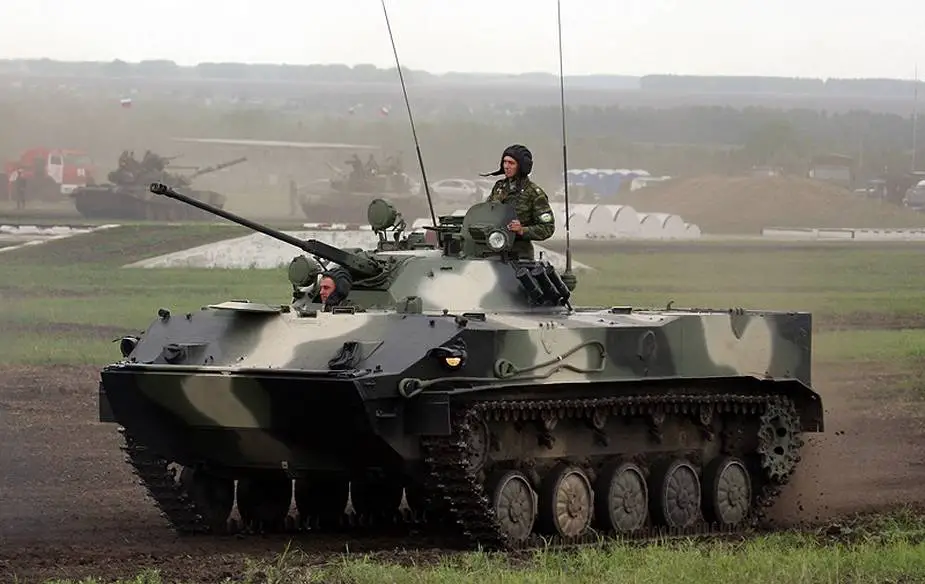
BMD-3 Airborne IFV Infantry Fighting Vehicle (photo not taken in Ukraine)
BMD-3
The BMD-3 is an airborne tracked armored infantry fighting vehicle designed and manufactured by the Russian Defense Company Volgograd Tractor Plant. The first production of BMD-3 was delivered in 1990 to Russian airborne units followed by naval infantry units. The BMD-3 can be dropped from transport aircraft by parachute with a complete crew of seven inside the vehicle.
The BMD-3 is equipped with a two-man turret which is armed with a 30mm 2A42 dual-feed automatic cannon and one 7.62mm PKT coaxial machine gun.
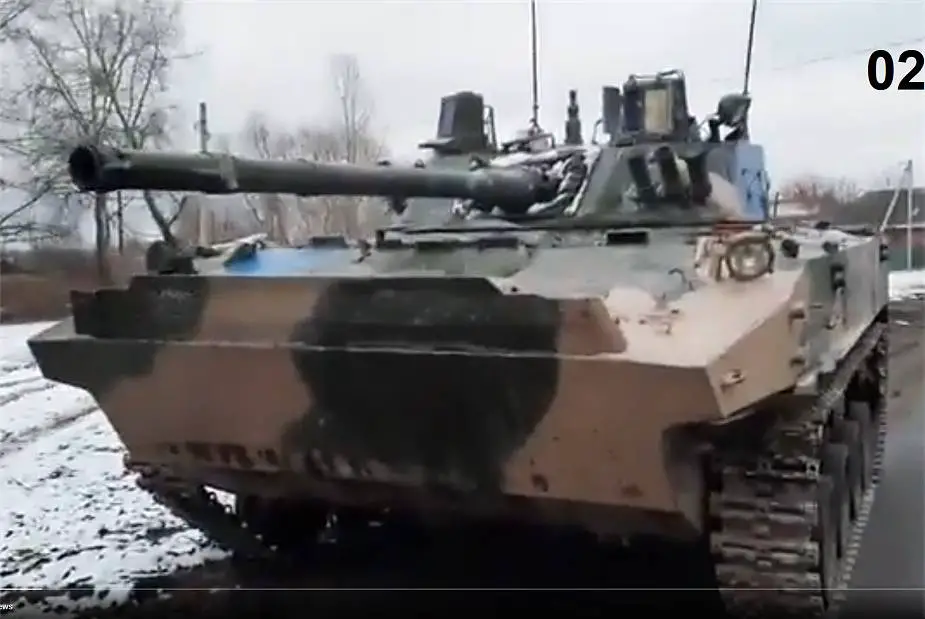
BMD-4M Airborne IFV Infantry Fighting Vehicle
BMD-4M
The BMD-4M is the latest generation of Russian-made airborne armored infantry fighting vehicles that can be para-dropped to provide firepower and support for airborne troops. It is an upgraded variant of the BMD-4 (BMD-3M).
The BMD-4M is fitted with a two-man turret armed with a 2A70 100mm caliber gun, coupled to a 30mm 2A72 cannon and a 7.62mm PKT coaxial machine gun mounted to the right of the main armament. The 100mm gun uses an automatic loader with 34 rounds of 100mm ready to fire and 18 in reserve. The main gun can fire conventional types of ammunitions and also the 100mm laser-guided ammunition Arkan Tandem 9M117M1 which can be used against modern main battle tanks at a maximum range of 5,500m and against sheltered and exposed personnel and fortifications at a maximum range of 7,000m
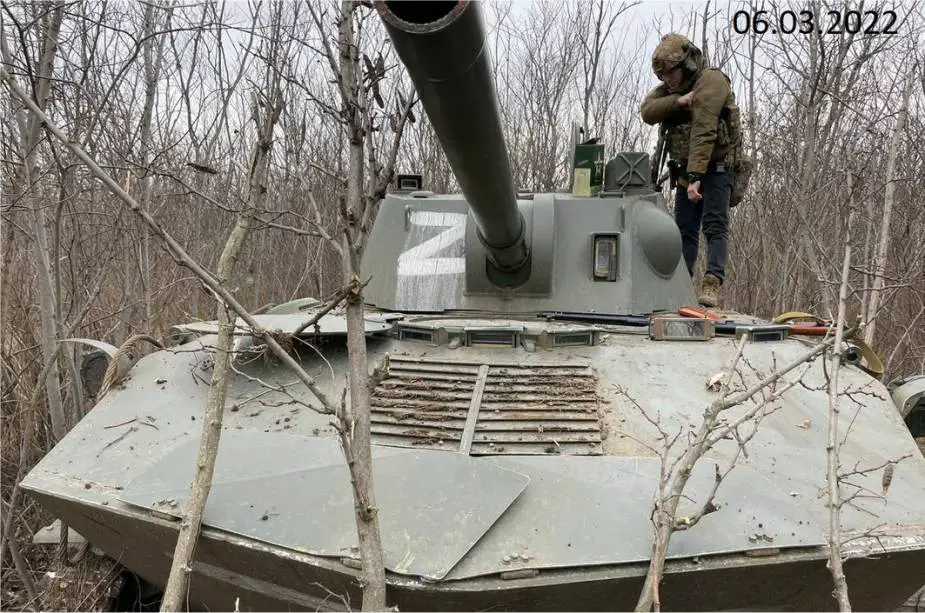
2S9 Nona-S 120mm self-propelled mortar carrier
2S9 Nona-S
The 2S9 also named Nona-S (Russian name SO-120) is a 120mm self-propelled mortar carrier designed and manufactured in Russia. The first was unveiled for the first time to the public during a military parade in May 1985. The vehicle was used mainly by the airborne troops to replace conventional artillery systems and to provide also a light anti-tank vehicle.
The 2S9 Nona-S is equipped with a two-man turret. The turret roof has two hatches, one for the gunner and the other for the loader. Turret traverse is limited to 30º on either side with an elevation for the mortar from -4° to +80°. The main armament of the 2S9 consists of a 120 mm breech-loaded gun 2A51 with a barrel approximately 1.8 m long. The standard HE mortar bomb has a maximum range of 8,855 m while the 120 mm rocket-assisted mortar bomb has a maximum range of 13,000 m.
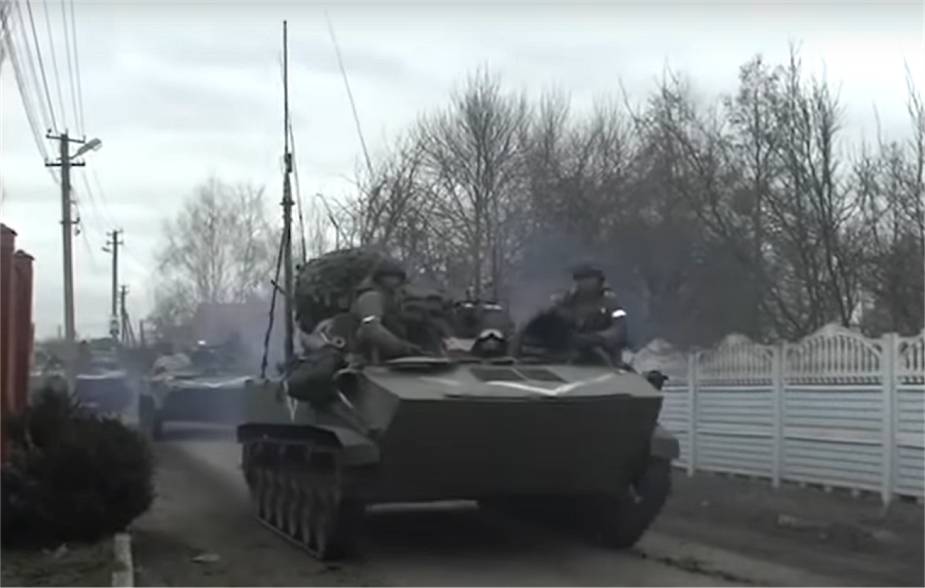
BMD-1 KSh Airborne command post armored vehicle
BMD-1 KSh
The BMD-1KSh is an airborne command post equipped with the R-123M, R-111 and R-130M or R-134 radio sets, as well as an AB1 portable 1 kW generator, the TNA-3 navigation system, folding CLOTHES HORSE type antennae around the superstructure, and two slim antenna masts. Bow mounted machine guns and firing ports were removed. The commander's hatch is offset to the left and does not project forward. It's sometimes called BMD-KSh or KShM-D. The vehicle is based on the BMD-1 tracked chassis.
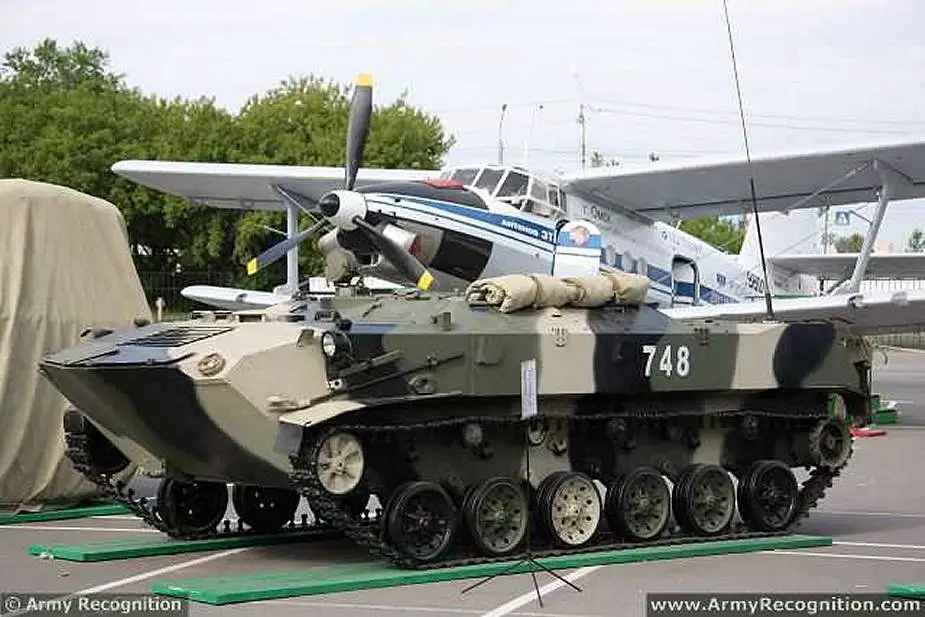
BTR-D Airborne APC armored personnel carrier. (photo not taken in Ukraine)
BTR-D
The BTR-D is a Soviet airborne multi-purpose tracked armored personnel carrier. It was introduced in 1974 and first seen by the West in 1979 during the Soviet-Afghan War. The vehicle is based on the tracked chassis of the BMD-1. It can carry up to ten fully equipped soldiers.
The original turret of the BMD-1 with all of the main armament was removed, the two bow-mounted machine guns have been retained. However, the original PKT tank machine guns have been replaced by PKB general-purpose machine guns. The vehicle can also be fitted with pintle-mounted automatic grenade launchers (AGS-17, AGS-30, or AGS-57) and/or machine guns (PKM, 6P41, "Utyos" or "Kord").
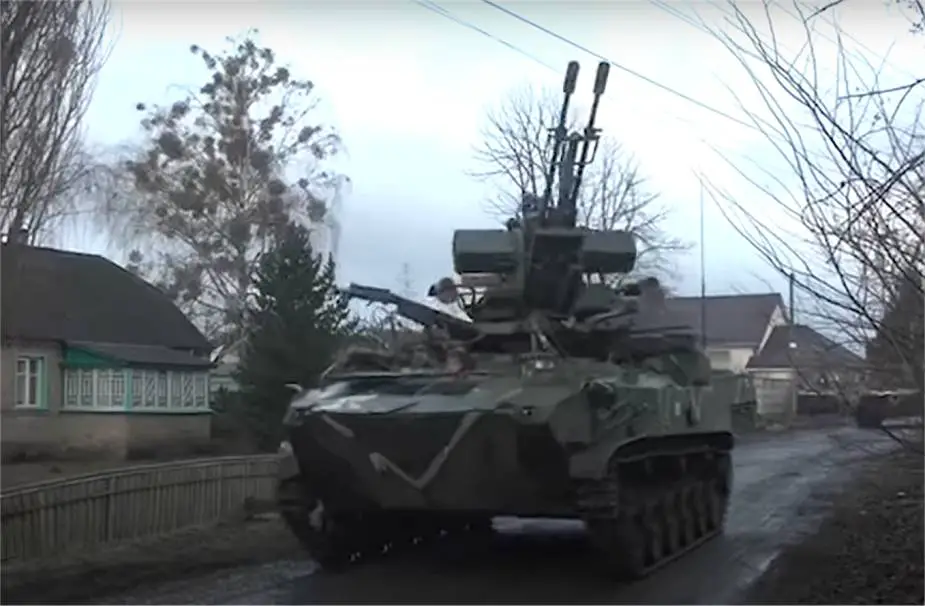
BTR-ZD Skrezhet 23mm airborne anti-aircraft gun system
BTR-ZD Skrezhet
The BTR-ZD is a self-propelled anti-aircraft gun system based on the tracked chassis of the BMD-1. The original turret of the BMD-1 has been removed and replaced by ZU-23-2 towed anti-aircraft gun mounted on top of the hull. Internally there are storage racks for 23mm ammunition and man-portable surface-to-air missiles. Missiles such as the 9K32M Strela-2M (SA-7 Grail) and 9K38 Igla (SA-18 Grouse) provide the crew of BTR-ZD with the ability to engage helicopters at greater ranges and the ability to engage ground attack aircraft.
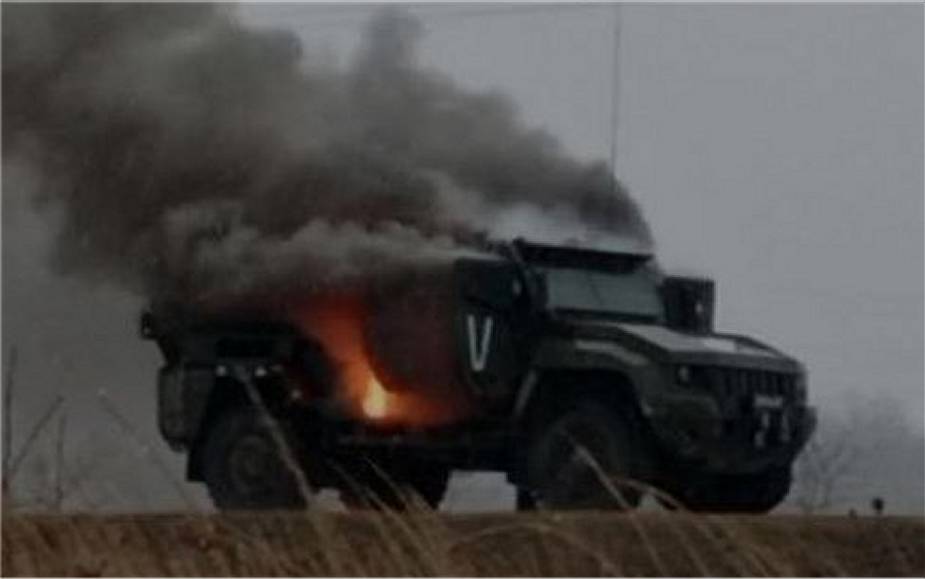
Typhoon-VDV 4x4 airborne armored personnel carrier
Typhoon-VDV
Typhoon-VDV is a 4×4 mine-protected wheeled armored vehicle designed and manufactured by the Russian company Remdiesel, a subsidiary of Kamaz. The vehicle is fitted with an unmanned turret BM-30-D armed with one 30 mm 2A42 automatic cannon, one 7.62 mm PKTM coaxial machinegun, and six smoke grenade launchers. The optoelectronic suite installed above the main gun includes a day/night vision, infrared cameras, and a laser rangefinder.
The hull of the K-4386 is made with composite ceramic and steel armor that provides ballistic protection against the firing of small arms 14.5mm armor-piercing bullets all-around the vehicle and mine blast protection of 8 kg TNT explosion under the wheels. It has a monocoque structure with an integrated V-shaped armor hull that protects occupants by deflecting mine blasts under the vehicle.
The K-4386 has a curb weight of 11,000 kg and a combat weight of 13,500 kg. It can accommodate 8 military personnel including driver, commander, and gunner.
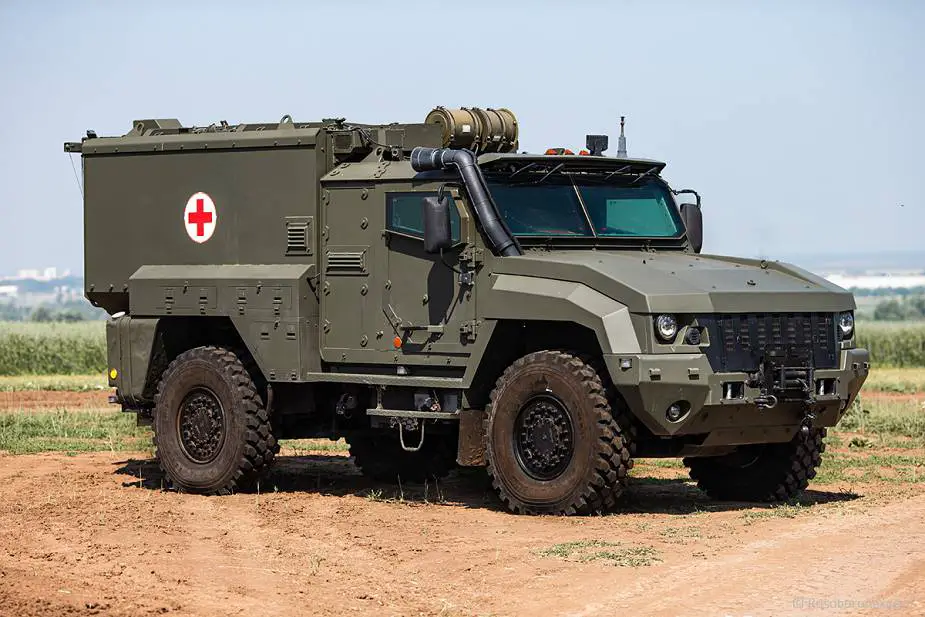
Kamaz-53949 Linza 4x4 ambulance armored vehicle. (photo not taken in Ukraine)
Kamaz-53949 Linza
The KamAZ-53949 Linza is a Russian-made mine-protected configured as an ambulance evacuation vehicle for the battlefield. The vehicle is designed to search, collect and evacuate wounded personnel from the battlefield. Created on a Kamaz-53949 Typhoon-K chassis of the MRAP type, the vehicle is protected against all types of small calibers and withstands an explosion of up to 8 kg of TNT under the wheels that are of the run-flat typr : a vehicle with a damaged wheel can still travel up to 50 km on rough terrain.
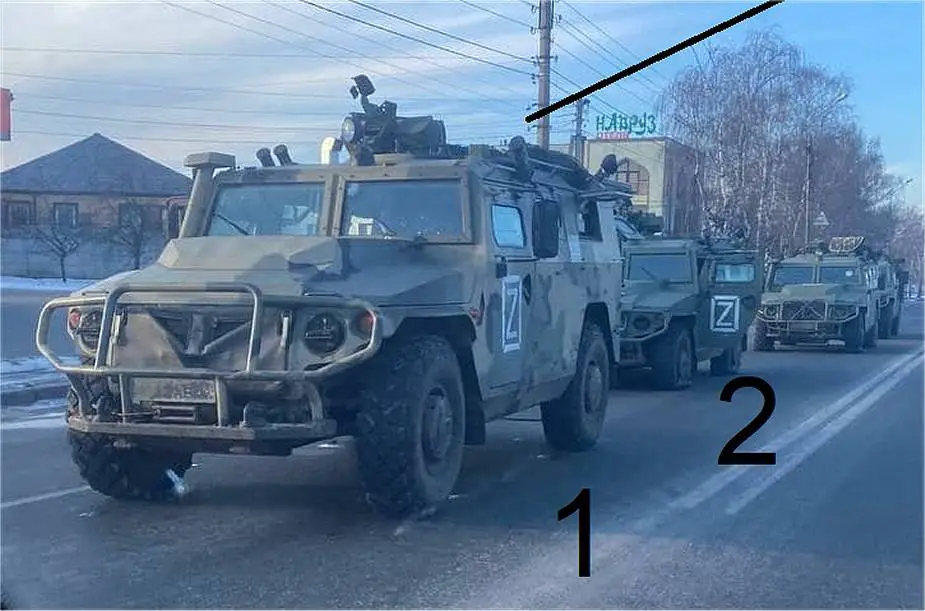
Tigr-M 4x4 armored personnel carrier.
Tigr-M
The Tigr-M or GAZ-233114 is an improved version of the standard 4x4 light tactical vehicle Tigr GAZ-2330. The vehicle is produced by the Russian Defense Company Arzamas Machinery-Plant, a Military Industrial Company subsidiary. The vehicle was developed by the Military Industrial Company in line with the specifications of the Russian Defence Ministry to expand the operational envelope of the Tigr special vehicle.
The Tigr-M is a 4x4 armored personnel carrier and can accommodate up to 10 soldiers. It can be armed with a light machine gun or grenade launcher. Hatches and brackets for installation of 7.62mm Pecheneg machine gun and 30mm AGS-17 grenade launchers are mounted on the vehicle’s roof.
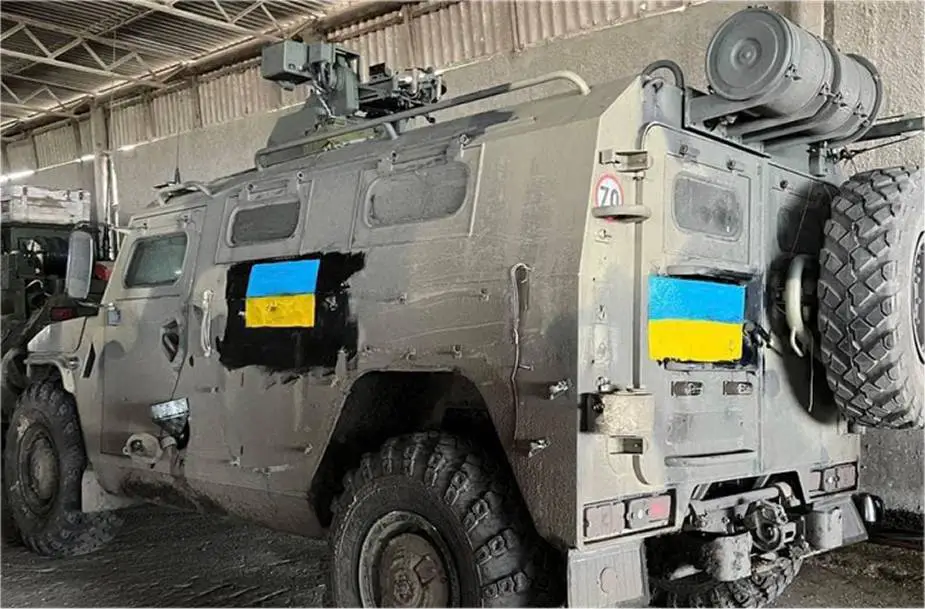
Tigr-M with Arbalet Remote Weapon Station.
Tigr-M Arbalet
The Tigr-M armored car mounting the Arbalet-DM remotely controlled fighting module has entered service with the Russian Army.The Tigr-M armored car equipped with the Arbalet-DM remotely controlled fighting module was introduced into the Armed Forces inventory in late January 2017.
The Arbalet-DM-furnished Tigr-M was unveiled at the Victory Day Parade on May 9, 2016. The module can equip wheeled and tracked armored vehicles, surface ships and stationary security posts. It packs the 12.7-mm KORD machinegun with the 150-round ammunition load or the 7.62-mm PKTM machinegun with 250 rounds of ammunition.
The module locks on and tracks targets at the halt and on the move, and its TV and thermal-imaging cameras allow target identification at a distance of 2.5 km and 1.5 km respectively. Its sight has an integral laser target rangefinder.
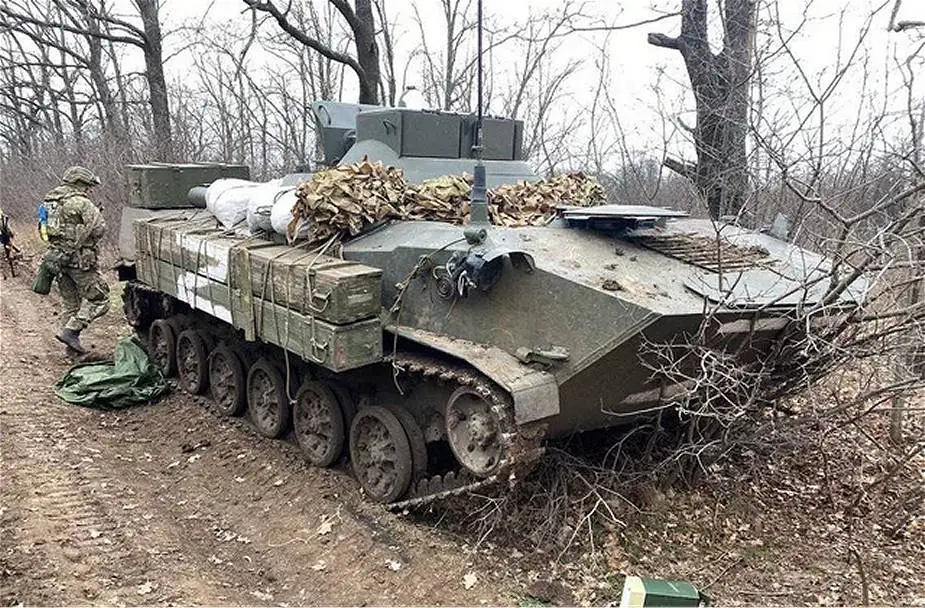
1V119 Reostat Airborne artillery battalion fire direction vehicle.
1V119 Reostat
The 1V119 Reostat is a BTR-D converted into an airborne artillery battalion fire direction vehicle. The vehicle is fitted with a turret equipped with NNP-21 and V-7 observation devices, three R-173 and R-159 radio sets, a PAB-2AM aiming circle, three antennae mounts, DSP-30, and DAK-2 rangefinders. The turret was equipped with PSNR-5K (1RL-133-1) "Tall Mike" ground surveillance radar mounted on the roof of the turret. Located over the turret front sights were visors hinged in the center
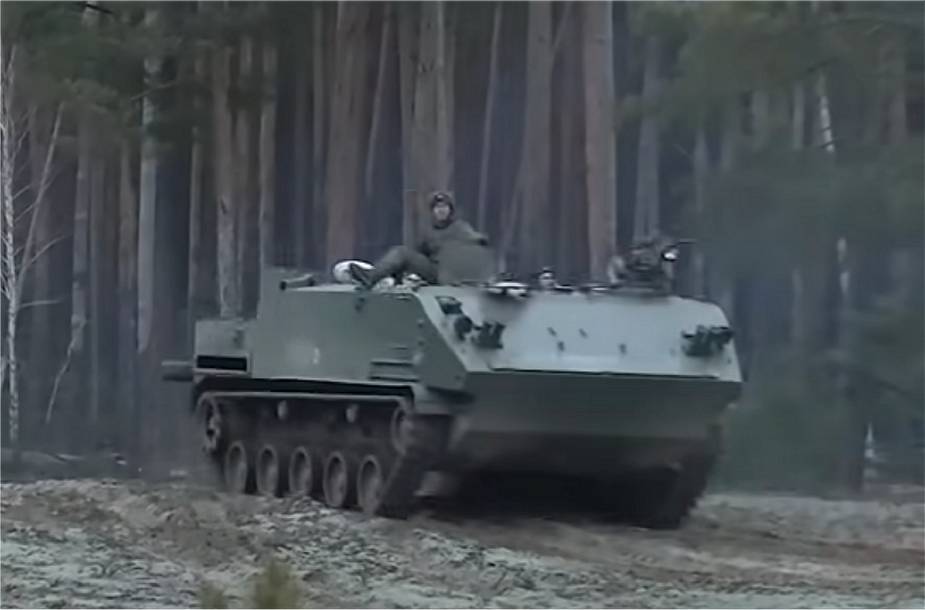
BTR-MDM Airborne tracked multi-role armored vehicle.
BTR-MDM
The BTR-MDM Rakushka is a further development of the BTR-MD airborne tracked multi-role armored vehicle. The BTR-MDM was unveiled for the first time at the 9th International Exhibition of Arms, Military Equipment and Ammunition Russian Arms Expo which was held from 25 - 28 September 2013 in the city of Nizhny Tagil, Russia. The BTR-MDM is used as a tracked armored personnel carrier for mechanized Airborne Forces (VDV) and he is based on the BMD-4M (Airborne Infantry Fighting Vehicle) chassis.
The BTR-MDM Rakushka is equipped with a remote weapon station mounted to the top left side of the hull armed with a 7.62mm or 12.7mm machine gun. Another 7.62mm machine gun is mounted at the front right side of the hull. Two smoke grenade dischargers are mounted to each side at the front of the vehicle. The crew consists of a commander, driver and 13 seats for military personnel.















